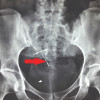
 IJCP Editorial Team
IJCP Editorial Team
My Learning with Nonalcoholic Fatty Liver Disease (NAFLD/MASLD)
Nonalcoholic fatty liver disease (NAFLD) is a multisystemic disease with extrahepatic associations.
The prevalence of NAFLD in India ranges between 9% and 53%. There is geographical variation in prevalence. There is also a rural-urban divide with the prevalence being higher in the urban areas.
Patients with type 2 diabetes are at higher risk of NAFLD. Ninety percent of individuals are obese or overweight, while 10% to 15% are lean. Other than metabolic risk factors, gut microbiome and genetics are also implicated in the pathogenesis.
The prevalence of NAFLD has been found to be high among healthy male blood donors in urban India amounting to 53.5% with 88.8% having mild hepatic steatosis, 10.2% with moderate steatosis and 0.9% with severe hepatic steatosis. Over 90% of them were overweight or obese.
In patients with NAFLD with small intestinal bacterial overgrowth, there is a high hepatic expression of TLR4 protein and CD14 mRNA and NF-κβ mRNA expression. The profi le of the Indian patients with NAFLD differs from that in the Western countries; 68% have obesity, 20% are overweight, 11% are lean and 48% have metabolic syndrome at the time of presentation.
The lean Indian patient with NAFLD has fewer metabolic risk factors as the non-lean patient. However, the severity of disease is similar.
A total of 102 countries were scored on the NAFLD policy preparedness index. Around one-third of them scored a zero out of 100. No country scored over 50/100. India scored the highest (42.7%).
Nearly one-third of patients have evidence of impaired renal function. Type 2 diabetes, raised transaminases, advanced fi brosis on TE are independent predictors of impaired renal function.
Lifestyle interventions are key in management with pharmacotherapy reserved for selected patients.
Patients who do not respond to lifestyle interventions may benefi t from metformin, which has been shown to be effective in achieving biochemical response.
In a study of nonresponder patients, use of metformin led to reduction in mean alanine transaminase (ALT) from 122 to 74 IU/L.
The ALT completely normalized (<40) in 59%. No side effects were observed and no patient dropped out.
A tertiary care center study found that patients with obstructive sleep apnea (OSA) have a high prevalence of NAFLD and OSA is an independent predictor of hepatic fi brosis in patients with NAFLD.

IJCP Editorial Team
Comprising seasoned professionals and experts from the medical field, the IJCP editorial team is dedicated to delivering timely and accurate content and thriving to provide attention-grabbing information for the readers. What sets them apart are their diverse expertise, spanning academia, research, and clinical practice, and their dedication to upholding the highest standards of quality and integrity. With a wealth of experience and a commitment to excellence, the IJCP editorial team strives to provide valuable perspectives, the latest trends, and in-depth analyses across various medical domains, all in a way that keeps you interested and engaged.














Please login to comment on this article